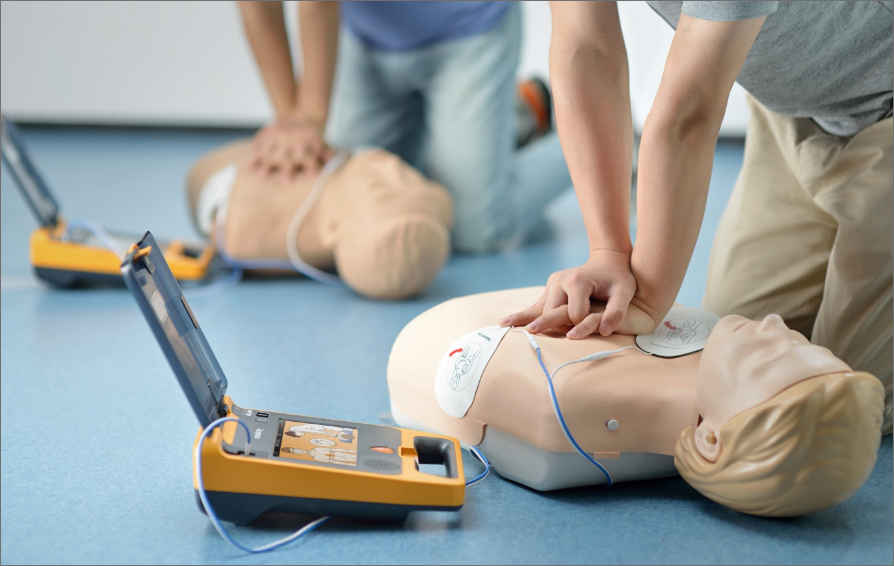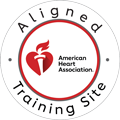In cases of sudden cardiac arrest, immediate action can be the difference between life and death. An Automated External Defibrillator, or AED, is a portable device designed to analyze heart rhythms and deliver a shock if needed to restore a normal heartbeat. Statistics show that survival rates for sudden cardiac arrest increase dramatically when an AED is used promptly, often in combination with high-quality CPR. While these devices are designed to be user-friendly, knowing when and when not to use an AED is critical for ensuring safety and effectiveness. This guide provides healthcare providers, first responders, and the general public with essential information to make confident, life-saving decisions.

When to Use an AED: Critical Situations
An AED should be used in situations of sudden cardiac arrest, which typically occurs when a person is unresponsive, not breathing normally, and has no detectable pulse.
Recognizing Sudden Cardiac Arrest
Recognizing the difference between cardiac arrest and other medical emergencies, such as fainting or seizures, is crucial. Immediate activation of the emergency response system—calling 911, starting CPR, and applying an AED—is part of the Chain of Survival, a sequence of steps that greatly increases the chance of survival. Every minute without defibrillation reduces survival rates by 7 to 10 percent, underscoring the importance of rapid recognition and action.
Specific Scenarios That Require AED Use
Specific scenarios that require AED use include a witnessed collapse with no signs of life, drowning victims who remain unresponsive after rescue, electrocution injuries resulting in cardiac arrest, drug overdoses that trigger sudden cardiac arrest, and sports-related cardiac events. In each case, the AED should be applied as quickly as possible, following voice prompts and maintaining safety protocols.
How to Use an AED Properly
The device guides users step-by-step, from turning it on to attaching the electrode pads to the patient’s bare chest, ensuring that even those with minimal training can provide potentially life-saving intervention. Once the AED advises a shock, no one should touch the patient, and CPR should resume immediately after the shock is delivered.
Call Us Now
Get the Best CPR Class in Kansas City Today!
When NOT to Use an AED: Important Exceptions
Despite their life-saving potential, there are important situations where an AED should not be used. If the patient is conscious, breathing normally, and has a detectable pulse, the device is unnecessary and may even cause harm. The priority in these cases is to call 911 and monitor the patient while waiting for professional assistance.
Environmental Hazards Present
Environmental hazards also pose a significant risk during AED use. Standing water or wet surfaces can conduct electricity, so patients should be moved to a dry area if possible, and the chest should be dried before pad placement. Flammable or explosive atmospheres, including oxygen-rich environments or the presence of gasoline, should be addressed before applying the AED to avoid igniting a fire or causing injury.
Physical Obstacles and Contraindications
Certain physical obstacles and medical considerations must also be accounted for. Medication patches on the chest should be removed and the area wiped clean to ensure proper pad adhesion and shock conduction. Excessive chest hair may require shaving, and many AED kits include small razors for this purpose. For patients with pacemakers or implanted devices, electrode pads should be placed at least one inch away from the implant to avoid interference. Jewelry and metal objects that cover the chest area should be removed to prevent poor pad contact or inaccurate rhythm analysis.
Pediatric Considerations
Pediatric considerations are also important: children under eight years of age or under 55 pounds require pediatric pads or AED settings, and infants under one year may only use an AED in rare situations when no alternative is available.
Common Mistakes to Avoid
Common mistakes with AED use can undermine its effectiveness. Hesitating to use the device due to fear or uncertainty can cost valuable time. Good Samaritan laws provide legal protection for rescuers using an AED in good faith. Stopping CPR for too long, failing to follow AED prompts, or touching the patient during rhythm analysis or shock delivery can compromise the intervention. Rescuers should trust the device, apply pads while minimizing interruptions to compressions, and adhere to all on-screen instructions for maximum effectiveness.
The Importance of Proper Training
Proper training is key to confidently using an AED. Certification programs teach integrated CPR and AED techniques, ensuring responders can act quickly and correctly. Training reinforces safe use, helps participants understand rhythm recognition, and updates skills according to current American Heart Association guidelines. CPR Kansas City offers hands-on practice with AED trainers, realistic emergency scenarios, and a stress-free learning environment. Courses in BLS, ACLS, PALS, CPR, and First Aid provide comprehensive preparation for both healthcare professionals and community responders.
Conclusion
An AED is a vital tool in the chain of survival for sudden cardiac arrest. It should be used on unresponsive individuals who are not breathing normally and have no pulse. Conversely, it should not be applied to conscious patients, in unsafe environments, or when physical obstacles prevent proper pad placement. AEDs are designed to be safe, intuitive, and effective, even for non-professionals. By obtaining proper training, practicing regularly, and understanding both the dos and don’ts of AED use, anyone can be prepared to take immediate, life-saving action when seconds matter most.
CPR Kansas City provides American Heart Association-certified courses that equip participants with the skills and confidence to use AEDs effectively. Enroll today to learn hands-on techniques, practice real-world scenarios, and ensure you are ready to respond safely and confidently in an emergency.


